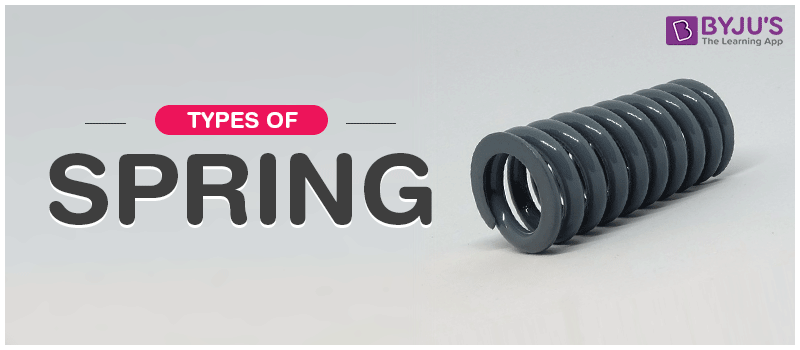
Various types of springs are used for domestic and industrial purposes. It stores mechanical energy and disposes of when required. Springs are classified into various categories depending upon various factors.
Classification of springs based on the load applied:
- Torsion Spring: This acts due to twisting force or torque applied in the spring. For example, mousetrap and clothes-pin
- Compression Spring: This acts due to the force exerted by the load which is compressed. These are used in shock absorbers, retractable pens, spring mattress.
- Extension Spring: It operates with tensile load and generally used in garage door mechanisms.
Classification of springs based on the displacement due to force applied:
- Constant Force Spring: Here, the spring is extended while applying a constant force. It is also known as clock springs. It is used in clocks and adjustment of a monitor screen.
- Variable Rate Spring: It does not have the same spring rate throughout the axial length. Depending on the spring rate, it is of three types.
- Linear Rate Spring which has a constant spring rate
- Progressive Rate Spring consisting variable spring rate
- Dual Rate Spring consisting of form rate and soft spring rate
- Linear Spring: These are helical springs with linear constant force
Classification of springs based on how they’re made:
- Coil Spring: These types of springs are lightweight and are made of metal wires formed with the help of a CNC coiling machine. The springs which come out of this machine need to be heated in order to get springy properties and create shape memory.
- Flat Spring: These are made by stamping metal parts into a sheet. These are also heat treated to shape memory. These are of all sorts of sizes and shapes and are coiled flat spring as well. They are used in spring washers, retainer clips, clock springs, and volute springs.
- Molded Spring: These springs are made of plastic or corrosive material. These have creep and generally used in intermittent cycles. Its application can be seen in food production, marine application, and medical.
- Machined Spring: These are used in a heavy-duty application where high strength and precision are required. It is used in mills and lathe machines.
These were some types of springs if you wish to know more, download BYJU’S – The Learning App
RELATED ARTICLES:
| Stress | Elastic Behaviour of Solids |
Frequently Asked Questions – FAQs
Classify the springs on the basis of load applied.
- Torsion spring
- Compression string
- Extension spring
Classify the springs based on the displacement due to force applied.
- Constant force spring
- Variable rate spring
- Linear spring

This is useful. Thank u BYJUS